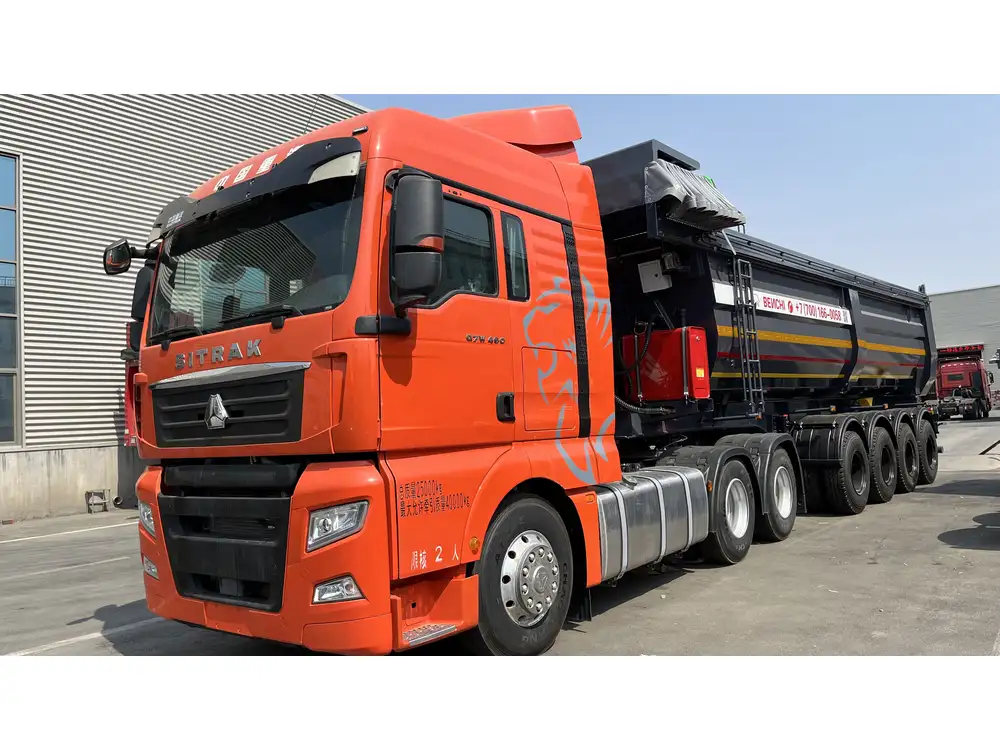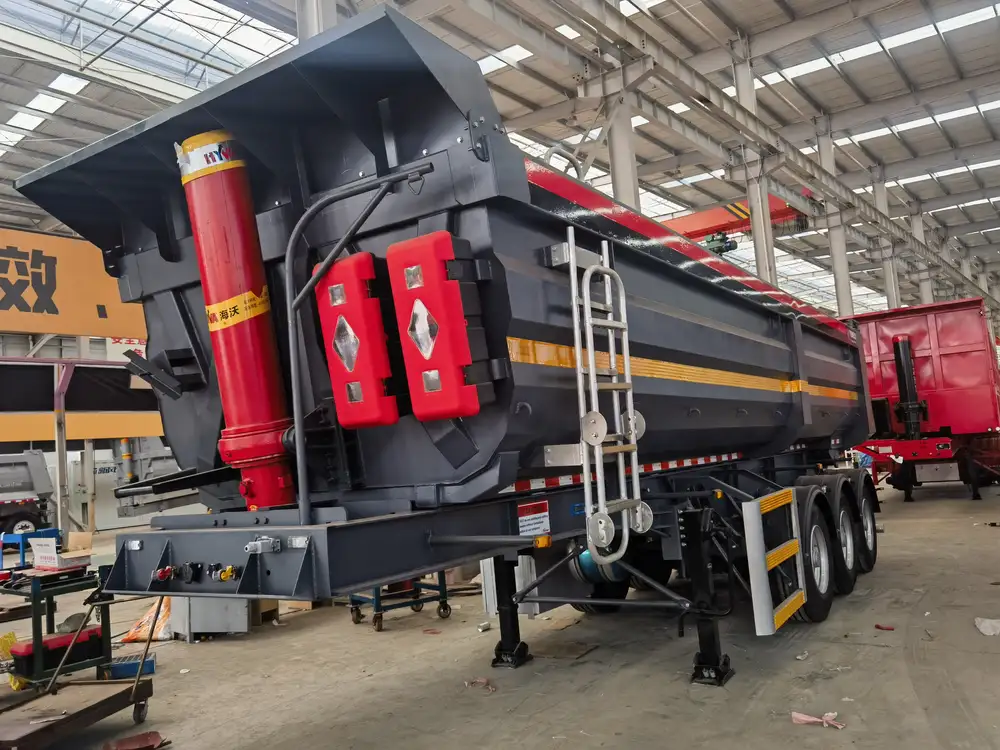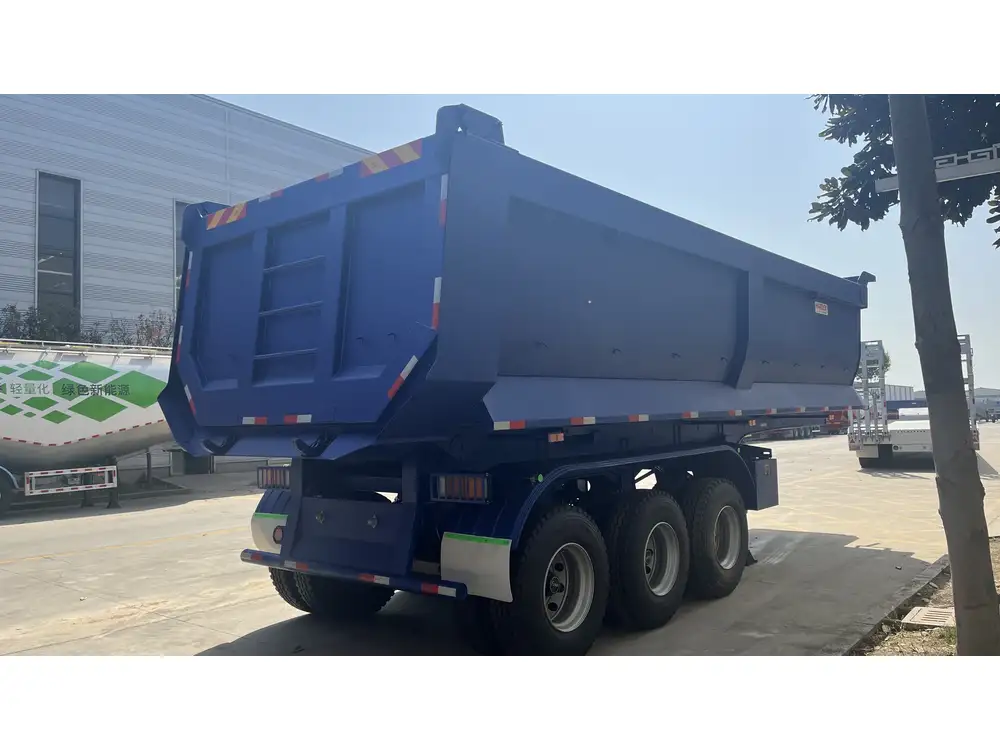In the world of logistics and transportation, understanding the dimensions of tractor trailers is crucial for efficient operations. The length of tractor trailers varies significantly based on multiple factors, including local regulations, type of freight, and design specifications. This comprehensive article explores the intricacies of tractor trailer lengths, their implications on transport logistics, and essential industry standards.
What Defines a Tractor Trailer?
Tractor trailers, also known as semi-trucks, consist of two main components: the tractor (the front part that houses the engine) and the trailer (the rear part that carries the cargo). The combination of these components allows for a highly effective transport solution, especially for long-haul freight.
| Component | Description |
|---|---|
| Tractor | The front unit featuring the engine and cab for the driver. |
| Trailer | The detachable section that carries goods; can come in various styles. |
| Combination | Together, the tractor and trailer form the semi-truck configuration. |
Standard Lengths of Tractor Trailers

Federal Regulations
In the United States, the federal government establishes regulations governing the maximum lengths of tractor trailers. However, states may have their specific rules, leading to variations across regions. Let’s break down the standard lengths commonly found in tractor trailers:
Overall Length: The maximum allowable length for a tractor trailer on federal highways is typically 65 feet, although it can extend up to 75 feet in certain states with specific regulations.
Trailer Length: The standard length for the trailer itself is usually 53 feet. This is the most common configuration used for interstate shipping.
Overall Vehicle Length: When considering the distance from the front of the tractor to the end of the trailer, most configurations meet the 65-foot standard, maximizing cargo capacity while complying with regulations.
State-Specific Regulations
While federal guidelines provide a baseline, individual states might allow longer combinations under specific conditions. For example, many states permit “longer combination vehicles” (LCVs), which can be longer than 75 feet but often require special permits. Below is a comparison table detailing some state-specific allowances for trailer lengths:
| State | Standard Max Length | LCV Allowable Length |
|---|---|---|
| California | 65 feet | 75 feet |
| Texas | 65 feet | 90 feet |
| Florida | 65 feet | 75 feet |
| New York | 65 feet | 70 feet |
| Illinois | 65 feet | 75 feet |
Variations in Trailer Types and Their Impact on Length
Different types of trailers serve unique purposes, which can result in slight variations in overall lengths. Understanding these configurations can help optimize freight and logistics planning.

Common Types of Trailers
Dry Van Trailers: The most prevalent type, typically measuring 48 to 53 feet long, used for transporting non-perishable goods.
Flatbed Trailers: These come in various sizes but commonly range from 48 to 53 feet as well. Their open structure allows for loading oversized or heavy cargo.
Refrigerated Trailers (Reefers): Generally similar in length to dry vans at 53 feet, they are designed with temperature-control features for perishable goods.
Tanker Trailers: While these trailers can also be around 40 to 53 feet long, their structure is designed to carry liquids, necessitating different considerations for stability and weight distribution.
Impact of Trailer Type on Load Efficiency
The type of trailer used impacts loading efficiency, weight restrictions, and even fuel consumption.
| Trailer Type | Standard Length | Ideal Cargo Use | Weight Limit |
|---|---|---|---|
| Dry Van | 53 feet | Non-perishables | 45,000 lbs |
| Flatbed | 48-53 feet | Oversized items | 48,000 lbs |
| Refrigerated | 53 feet | Perishable goods | 42,000 lbs |
| Tanker | 40-53 feet | Liquids (fuels, chemicals) | Varies significantly |
Practical Considerations for Shippers

The Importance of Compliance
Compliance with length regulations is not merely a matter of legal adherence; it also significantly impacts operational efficiency. Non-compliance can lead to severe penalties, including fines and vehicle impoundment. Furthermore, improper length can affect load distribution and safety.
Navigational Challenges
Longer tractor trailers may face challenges navigating tight urban areas, especially on narrow streets and sharp turns. Consequently, businesses must consider the route’s infrastructure before dispatching long combinations, optimizing both time and safety.
Impact on Costs
Longer trailers generally offer higher cargo capacity, which can reduce transportation costs per unit. However, they may necessitate utilizing routes that accommodate such lengths, potentially impacting delivery times. Shippers must balance capacity, cost, and time efficiency.

The Future of Tractor Trailer Design
Innovations in Trailer Technology
Recent technological advancements in logistics are driving changes in tractor trailer design and functionality. Notable trends include:
Aerodynamic Designs: Enhanced shapes are reducing drag, leading to improved fuel efficiency and reduced emissions.
Smart Trailers: Integration of IoT devices allows real-time cargo tracking and condition monitoring, providing valuable data for logistics optimization.
Weight Reduction: New materials, such as composite materials and aluminum, are being used to reduce trailer weight without sacrificing strength.
These innovations present opportunities for shippers to maximize efficiency and reduce operational costs.
Environmental Considerations
Environmental regulations are increasingly influencing trailer designs. The push for sustainability is leading many manufacturers to explore electric powertrains and alternative fuels, promising a noteworthy shift in how freight is transported in the future.

Conclusion: The Significance of Understanding Tractor Trailer Length
Understanding tractor trailer dimensions is not merely an academic exercise; it plays a fundamental role in ensuring efficient and compliant freight transport. Shippers must be well-versed in the standards and regulations governing trailer lengths to optimize their logistics strategies effectively.
While the standard lengths provide a framework, the nuances of state regulations, trailer types, and technological advances are all interconnected, forming a vast network of considerations for modern transportation. As regulations evolve and new technologies emerge, staying informed and adaptable will be essential for success in the logistics industry.
By prioritizing knowledge regarding the dimensions, regulations, and innovations surrounding tractor trailers, stakeholders within the logistics sector can enhance their operations, cut costs, and improve service delivery.



